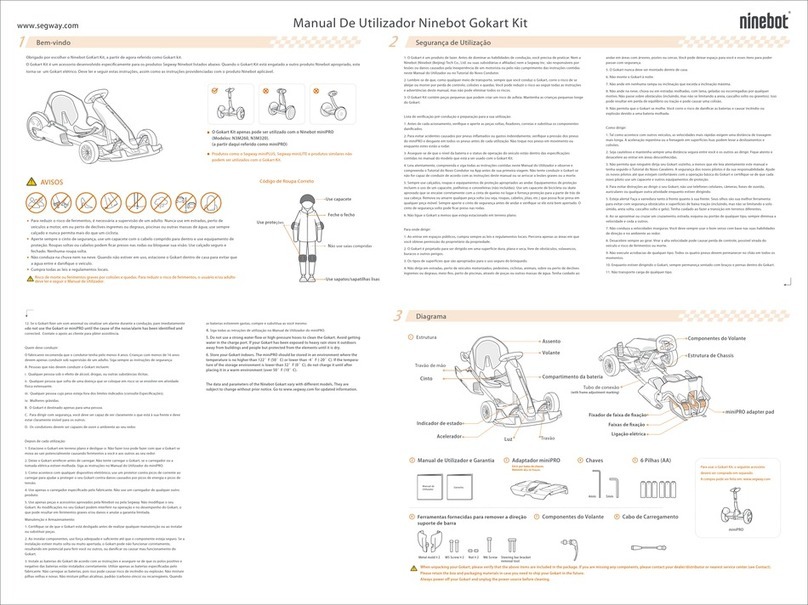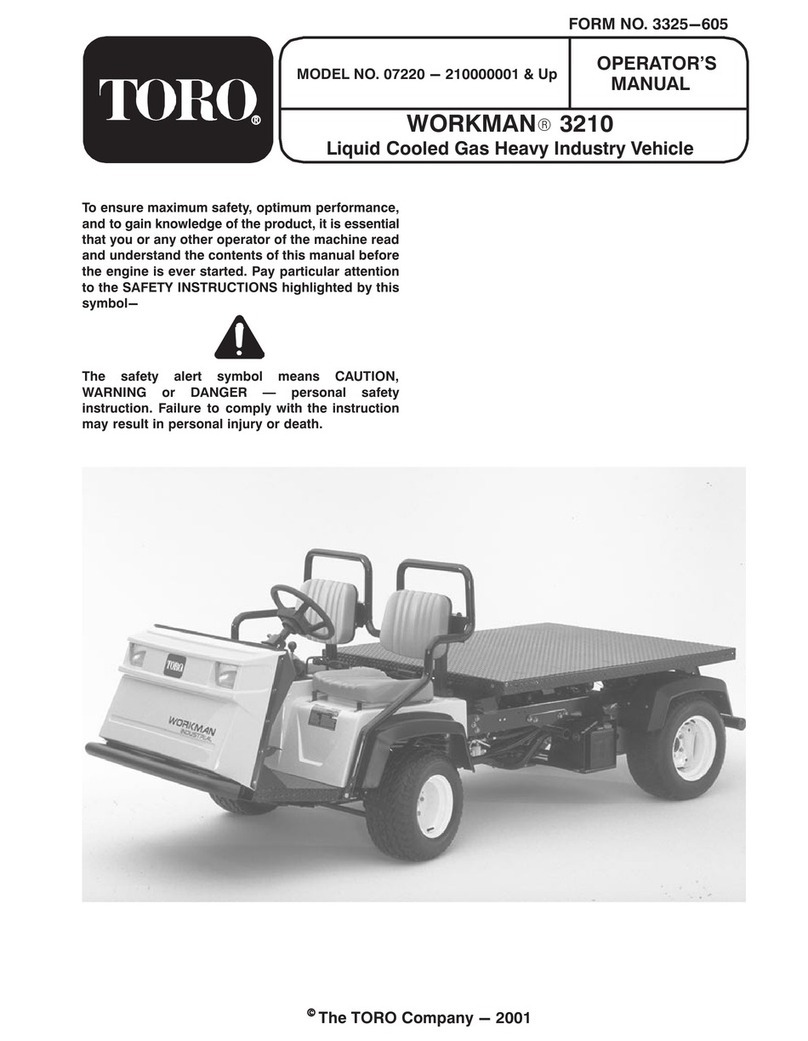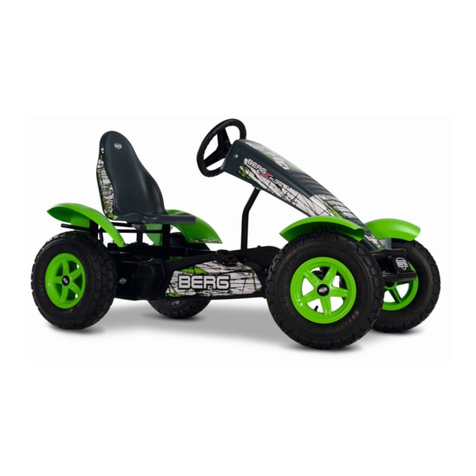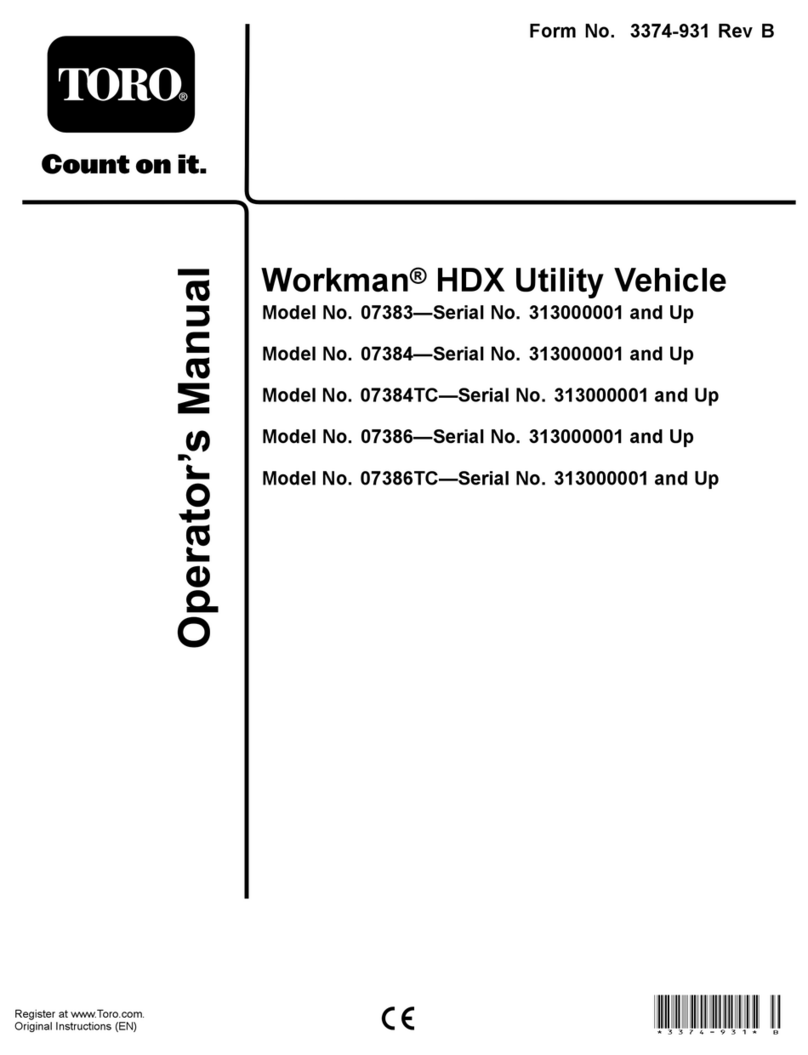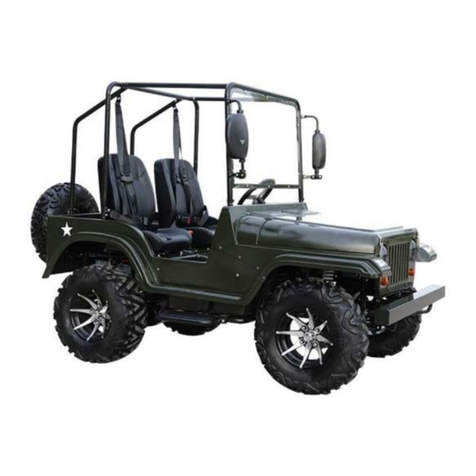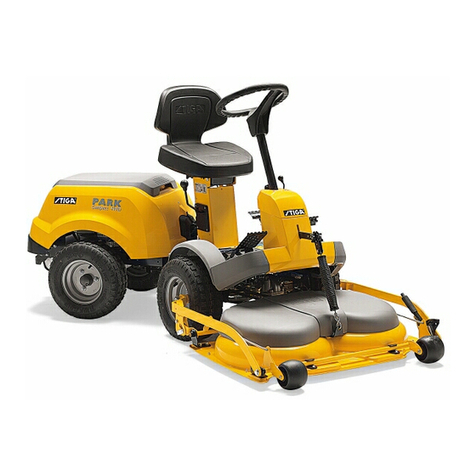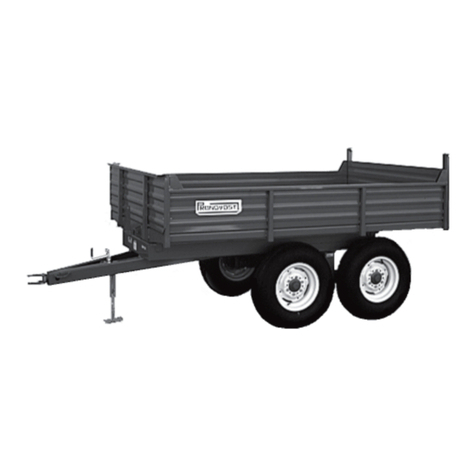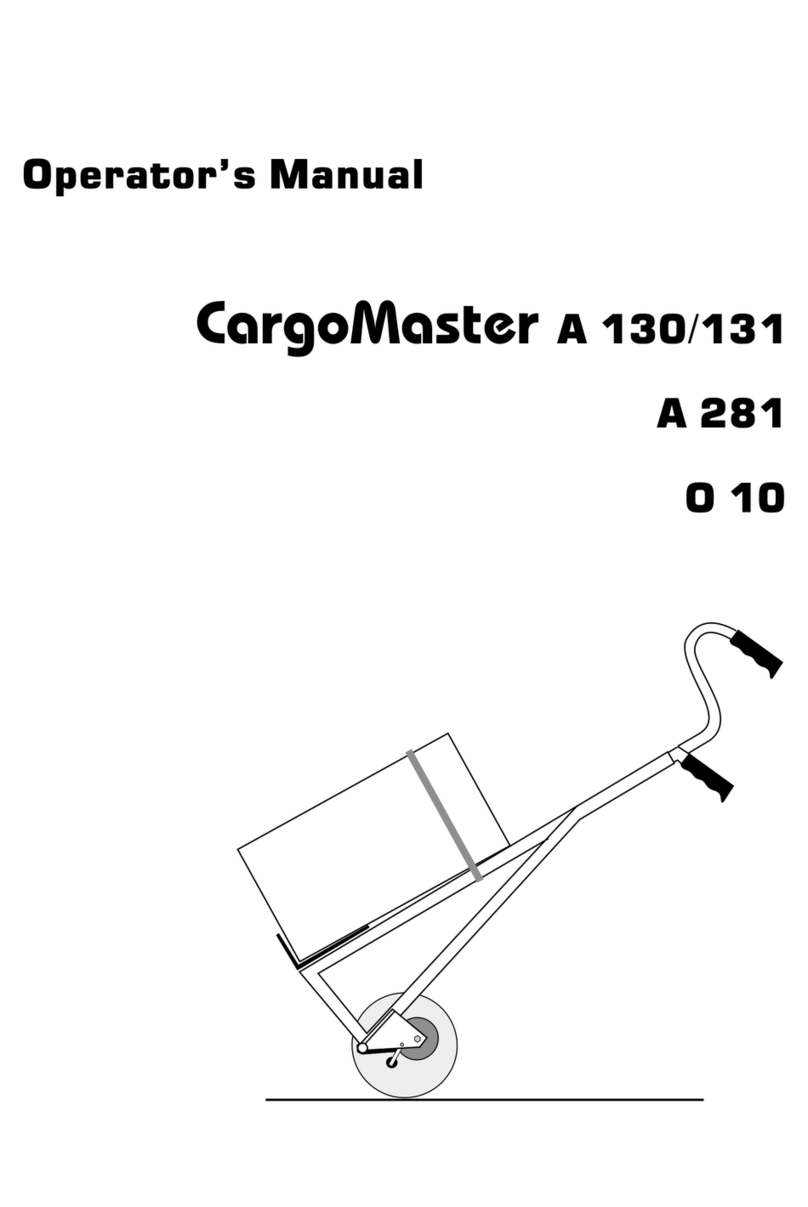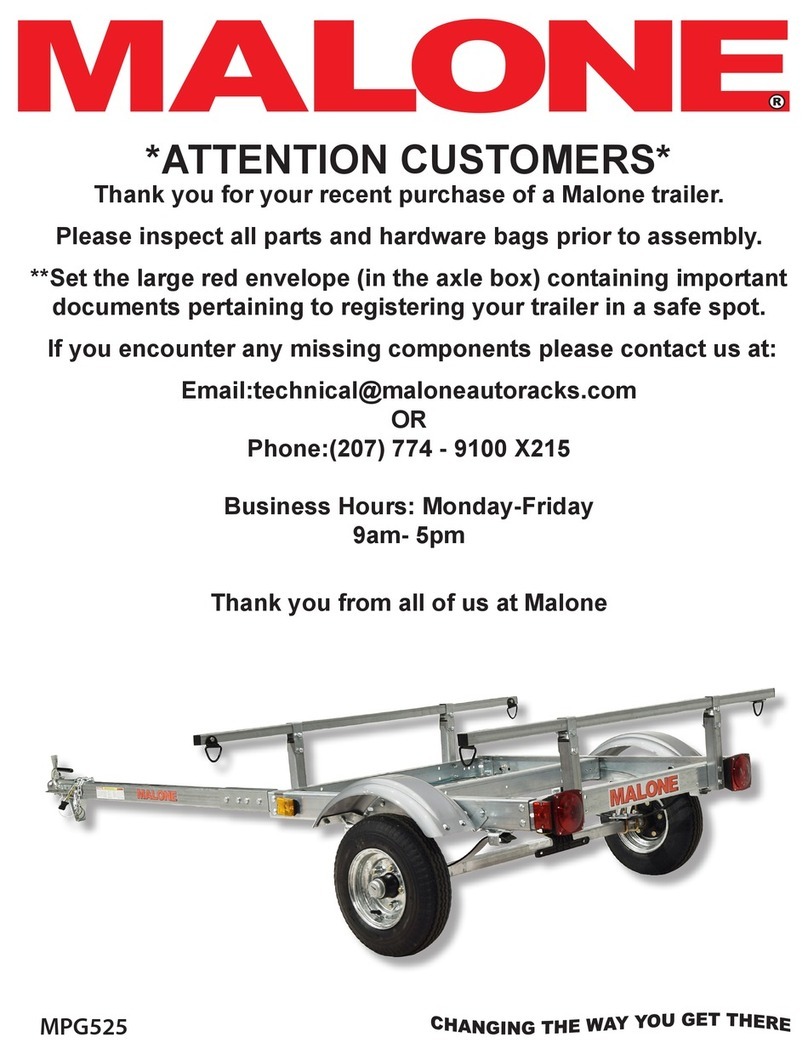Ninebot Gokart Pro User manual

The manufacturer reserves the right to make changes to the product, release firmware updates, and update this
manual at any time. Visit www.segway.com or check the Segway-Ninebot App to download the latest user materials.
You must install the App to follow the New Rider Tutorial and activate your product, and obtain the latest updates and
safety instructions.
User Manual
Ninebot Gokart Pro & Ninebot S-Max
CE.00.0035.31-C

WelcomeContents
Thanks for choosing the Ninebot Gokart Pro.
Ninebot Gokart Pro is a stylish sports and entertainment equipment, which can be separated into a Gokart
frame and a self-balancing vehicle. You can also assemble the body of the self-balancing vehicle into Ninebot
S-Max.
This manual introduces respectively the Ninebot Gokart Pro (hereinafter referred to as Gokart) and the
Ninebot S-Max (hereinafter referred to as S-Max).
Enjoy your ride and connect with riders worldwide!
* Illustrations of the product, accessories, and user interface in the user manual are for reference purposes only.
Actual product and functions may vary due to product enhancements.
Packing List
Welcome
Ninebot GokartPro
1 Riding Safety
2 Diagram
3 Adjustment
4 Installation of Accessories
5 Charging
6 Before the First Drive
7 Learning to Drive
8 Specifications
9 Certifications
01
02
04
Assembly and Riding Safety Video
Maintenance
Trademark and Legal Statement
1 Riding Safety
2 Diagram
3 Remove the S-Max body form the Gokart
4 Assembling Your S-Max
5 Charging
6 Before the First Ride
7 Learning to Ride
8 Warning
9 Bluetooth Remote Control
10 Lifting and Power-assist Mode
11 Specifications
12 Certifications
Ninebot S-Max
04
08
09
10
12
12
14
16
18
19
19
21
23
24
26
27
28
30
33
34
35
36
37
38
40
01

Packing List
Frame
Hex wrenches
4 mm
hex wrench 5 mm
hex wrench 2.5 mm
hex wrench
User material
Accessories
2
1
4
(AA) battery × 6
3
Screw × 6
User Manual Quick Start Guide
Metal mold×2 M5 screw×2 M6 screwNut×2 Steering bar
bracket removal tool
Tools to remove the steering bar bracket
5
When unpacking your Gokart, please verify that the above items are included in the package. If you are missing any
components, please contact your dealer/distributor or nearest service center.
Please retain the box and packaging materials in case you need to ship your Gokart in the future. Always power off your Gokart
and unplug from the power supply before cleaning.
Ninebot Engine Speaker
(hereinafter referred to as “the speaker")
Rear spoiler
Battery Charger
Steering bar Tire * Sold separately at http://ww.segway.com
Steering wheel quick release components
6
8
10
7
9
Screw × 2 Cap
Front tire Comfortable tireRear tire
(For Ninebot S-Max only)
02 03

Ninebot Gokart Pro
1 Riding Safety
1Gokart is a recreational product. Before mastering riding skills, you need to practice. Neither Ninebot (Ninebot (Beijing)
Tech Co., Ltd. or its subsidiaries and affiliates) nor Segway Inc. is responsible for injuries or damage caused by a driver's
inexperience or failure to follow the instructions in this User Manual or in the New Rider Tutorial.
2Remember as with any mode of transportation, that whenever you drive the Gokart, you risk injury or death from loss of
control, collisions, and falls. You can reduce the risk by following all the instructions and warnings in this manual, but you
cannot eliminate all the risks.
3The Gokart kit contains small parts which can create a choking hazard. Keep small children away from the Gokart.
Pre-Ride Checklist and Preparing for Your Drive:
1. Before each drive check and tighten any loose parts, fasteners, straps, and replace damaged components.
2. To avoid accidents caused by improperly inflated or worn tires, check the tire pressure on the Ninebot S-Max tires and wear
on all tires before each ride. Do not touch moving or spinning tires.
3. Ensure that the battery level and vehicle operating status are within the specifications contained in the manual of the model
being used with the Gokart.
4. Carefully read, understand, and follow all instructions in this User Manual and watch and understand the New Rider Tutorial
in the App before your first drive. Do not attempt to drive the Gokart if you are not able to drive in accordance with the
instructions in this Manual or you risk serious injury or death.
5. Always wear appropriate shoes, clothing, and protective gear when driving. Protective gear includes the use of a helmet,
knee pads, and elbow pads. Use an approved bicycle or skateboard helmet that fits properly with the chin strap in place, and
protects the back of your head.
Remove or tie back anything loose (i.e. clothing, hair, jewelry, etc.) that could be caught in any moving parts. Always fasten
the seat belt before riding and ensure it is securely tightened. A loose seat belt can get stuck in the wheels.
6. Be sure to read and follow all the "WARNING" ( ) "CAUTION" ( ) notices in this manual. Never allow two or more riders at
the same time.
7. To avoid burns caused by high temperature, Do not touch the motor.
8. Do not lift or press the rear spoiler. Do not lift the product when holding the taillight. Always lift the rear bumper when you
need to carry the Gokart.
Where to Drive:
1. When entering public spaces, always comply with local laws and regulations. Only ride in areas where you have first obtained
permission from the property owner.
2. The Gokart is designed to be driven on a dry, flat, hard-surface, free of obstacles, bumps, holes, and other hazards.
3. Do not drive on roadways, near motor vehicles, pedestrians, bicyclists, animals, on or near steep inclines or steps, curbs,
near swimming pools, through puddles or other bodies of water. Use caution when riding in areas with trees, posts, or
fences. You must leave sufficient space between you and those items to be able to safely pass them.
4. Do not ride the Gokart at night.
5. Do not ride on any ramp or incline that exceeds the maximum slope.
6. The Gokart is never to be ridden indoors.
7. Do not ride in the snow, rain, or on roads which are wet, muddy, icy, or that are slippery for any reason. Do not ride over
obstacles (including, but not limited to, sand, loose gravel, or sticks). Doing so could result in a loss of balance or traction
and could cause a collision.
8. Do not allow the Gokart to get wet. You risk damage to the batteries and potential for a fire or explosion due to a wet battery
pack.
How to Drive:
1. Gokart is not a means of transportation. Please obey local laws, regulations, and policies when driving.
2. Do not turn the Gokart on unless it is parked on flat ground. As with other vehicles, faster speeds require longer braking
distance. Sudden acceleration or braking on smooth surfaces could lead to wheel slip and collisions.
3. Be cautious and always keep a safe distance between you and others when driving. Be alert and slow down when entering
unfamiliar areas. Do not drive at unsafe speeds. You must always use good judgment based on your driving skills and the
surrounding environment.
4. Do not allow anyone to drive your Gokart on his/her own unless he/she has carefully read this manual, and followed the New
Rider Tutorial. The safety of new riders is your responsibility. Assist new riders until they are comfortable with the basic
operation of the Gokart and make sure each new rider wears a helmet and other protective gear.
5. To avoid distraction when driving your Gokart, do not use a cell phone, camera, headphones, earbuds, or perform any other
No
loose
long
hair
04 05

activities while driving.
6. When approaching or crossing an intersection, road, corner, or gate of any kind, always slow down and yield to others.
7. Be alert! Scan both far ahead and in front of you. Your eyes are your best tool for safely avoiding obstacles and low traction
surfaces (including, but not limited to, wet ground, loose sand, loose gravel, and ice). Use caution when transitioning over
differing terrain.
8. Always slow down when turning. Turning at a high speed can cause loss of control, possible vehicle turn-over, and risk of
injury or death.
9. Do not perform stunts of any kind. All four tires must remain on the ground at all times.
10. While driving the Gokart, always remain seated with arms and legs inside the Gokart.
11. Do not carry cargo of any kind.
12. If the Gokart makes an abnormal sound or signals an alarm while driving, stop immediately and do not use the Gokart or
Ninebot S-Max until the cause of the noise/alarm has been identified and corrected. Contact after-sales service for
assistance.
Who Should Drive:
The manufacturer recommends drivers be at least 14 years old. Children under the age of 16 should only drive under adult
supervision. Always follow these safety instructions:
A. People who should not drive the Gokart include:
i. Anyone under the influence of alcohol, drugs, or intoxicants.
ii. Anyone who suffers from disease that puts himself/herself at risk if he/she engages in strenuous physical activity.
iii. Anyone who has problems with balance or with motor skills that would interfere with their ability to maintain balance.
iv. Anyone whose weight is outside the stated limits (see Specifications).
v. Pregnant women.
B. The Gokart is intended for one person only.
C. To drive safely, you must be able to clearly see what is in front of you and you must be clearly visible to others.
D. Drivers must be able to hear the environment around them.
After Each Drive:
1. Park the Gokart on flat ground and power it off. Failure to do so could cause the Gokart to move when exiting potentially
causing injury to you and others around you.
2. Allow the Gokart to cool down before charging. Do not attempt to charge the Gokart, if it, the charger, or the power outlet is
wet. Follow instructions in the Ninebot S-Max User Manual.
3. As with any electronic device, use a surge protector when charging to help protect your Gokart from damage due to power
surges and voltage spikes.
4. Only use the charger specified by the manufacturer. Do not use a charger from any other product.
5. Only use Ninebot or Segway approved parts and accessories. Do not modify your Gokart. Modifications to your Gokart could
interfere with the operation and performance of the Gokart, which may result in serious injury and/or damage, and could
void the Limited Warranty.
Maintenance and Storage:
1. Be sure the Gokart is powered off before performing any maintenance or when installing or replacing parts.
2. When installing components, use proper and sufficient force until the component is secure. If the installation is too loose or
too tight, the Gokart may not function properly, resulting in the potential for injury to you or others or damage to, or
malfunction of, the Gokart.
3. Install batteries for the Gokart in accordance with the instructions and ensure that the positive and negative electrodes of
the batteries are installed correctly. Only use the batteries specified by the manufacturer. Do not charge the batteries as this
may cause a risk of fire or explosion. Do not mix old and new batteries. Do not mix alkaline, standard (carbon-zinc), or
rechargeable batteries. When the batteries are dead, purchase and replace them yourself.
4. Follow all instructions contained in the Ninebot S-Max User Manual when performing maintenance on the Ninebot S-Max.
5. Do not use a strong water flow or high-pressure hoses to clean the Gokart. Avoid getting water in the charge port. If your
Gokart has been exposed to heavy rain store it outdoors away from buildings and people but protected from the elements
until it is dry.
6. Prolonged exposure to UV rays, rain and the elements may damage the enclosure materials. Store indoors when not in use.
The Ninebot S/S-PRO should be stored in an environment where the temperature is no higher than 122°F (50°C) or lower
than -4°F (-20°C). If the temperature of the storage environment is lower than 32°F (0°C), do not charge it until after placing
it in a warm environment: over 50°F (10°C).
7. Do not charge the Gokart when the charge port, charger, or power socket is wet. Only use the original charger provided by
Ninebot or Segway when charging. Do not charge dry cells.
The data and parameters of the product vary with different models. They are subject to change without prior notice. Go to
www.segway.com for updated information.
06 07

2 Diagram 3 Adjustment
Handbrake handle
Seat
Steering wheel
(AA) Battery
compartment
Throttle (right)
Brake (left)
Front bumper
Status indicator
Headlight
Seat belt
Waist protector
rear spoiler
Scalable structure
of frame
Steering wheel
quick-release components
Electrical connection
cable plug
Attachment straps
Connection tube
Support rods
(with frame adjustment marking)
Strap fixing hole
Adapter pad
Stretch the frame and adjust the length
of the body
Adjust the steering wheel height
a Raise the steering wheel to a suitable height.
b Insert the quick release screw into the hole of
the corresponding height.
(Insert the quick release screw into the hole of
the corresponding height.)
c Tighten the quick release nut.
d Press to fix the steering wheel quick-release
components.
e Ensure the steering wheel does not shake.
Otherwise, repeat the steps b, c, d, e.
a
b
b
c
d
a
Power Button
Taillight
Rear bumper
* Press to turn on,
press and hold to turn off.
(Ninebot Engine Speaker location)
Remove the speaker before adjusting the
height of the steering wheel (see page 11).
Power extension cord
a With both hands holding the steering wheel and the
seat, stretch the frame out to a suitable position
along the horizontal direction of the connection
tube.
b Align the scalable structure of the frame with the
marking on the connection tube.
c Positioning: Use the short hex wrench to press the
two screws into the holes on the left and right
connection tube in order, as shown in the figure
(The screw is set to a depth of about 1 cm for
successful position).
d Tighten the 4 screws.
Four screws are already
inserted into the screw holes.
b
c
d
a
08 09

Press the disassembly switch while lifting the speaker upward.
* For more information about the speaker, see the user manual of Ninebot Engine Speaker.
Note: Do not press or lift the rear spoiler during installation.
a Insert the tail bracket into the tail jack.
a Place the base in a proper position (as shown below) and
wrap the strap around the vehicle body and fasten the
strap. Press the remaining part of the strap into the
storage slot.
Install the Rear spoiler
4 Installation of Accessories
Install the Ninebot Engine Speaker
Remove the Speaker
b Use the 2.5 mm hex wrench to tighten the 6 screws
into the main body of the rear spoiler (See Accessory
No. 2).
bAlign the holes on the bottom of the speaker. Press
down until you hear a "clicking" sound.
b
a
a
LR
Disassembly and Replacement of Tires
3 Tighten the screw.
* Only applicable to Gokart front tire.
1 Use a 19 mm wrench to remove
the middle screw.
2 Replace the tire.
b
The cross head of the screw should face outwards.
10 11

How to activate:
6 Before the First Drive
For your safety, a new Gokart is inactivated. Please activate your Gokart via the App
before first use.
Scan the QR code to download the App (iOS 9.0 or above, Android™ 4.3 or above,
Bluetooth 4.1 or above).
The Gokart has four modes: ECO, STRADA, SPORT, and CORSA mode. After the Gokart is activated, the
mode can be switched via the App.
Indicator
Connect the electrical
connection cable and the
power extension cord. Install
the batteries.
5 Charging
2Charge the Gokart by plugging the S-Max
power cord into the power extension cord.
Gokart cannot charge if its temperature exceeds 104°F (40℃). Please wait for the temperature to drop
before charging.
ONLY use the original charger, otherwise the battery will be damaged and there is a risk of fire. Do not use
wet or damaged batteries. Do not charge when the charge port or cable is wet.
Riding Safety
Now you can start to drive your Gokart, check its performance, and interact with other drivers. Have fun!
1 Disconnect the electrical connection cable of the
Gokart from the power extension cord.
Install the App and register/log in.
1Press the power button on the S-Max to turn on the Gokart Pro.
The Gokart will automatically power off when idle for 10 minutes.
2
Open the App, Click Vehicle > Search device to connect to your
Gokart. The vehicle will beep when the connection is successful.
The status indicator will stop blinking and remain illuminated.
3Follow the instructions in the app to activate the
Gokart and complete the corresponding tutorial and
exercises.
4
Segway-Ninebot App
12 13

7 Learning to Drive
Note: Please check the battery level of S-Max before use. If the battery is too low, please charge immediately.
Correct dress code
Wear a helmet
Tie up long hair (if any)
Zip up the zipper
No long skirts
Wear flat shoes
Wear
protective
gear
You are at a risk of injury when
driving a Gokart, please dress
properly as shown in the picture.
Minors must learn and drive under
adult supervision.
When the Gokart is stopped, double-press the
brake (left pedal). After you hear a beep,
the Gokart has switched to reverse mode. Press
the throttle to drive the Gokart in reverse.
Double-press the brake (left pedal) again to
return to forward mode.
3Reversing
Acceleration: lightly press the throttle (right pedal)
to go forward.
Deceleration: lightly press the brake (left pedal) to
decelerate.
* Do not pump the brake pedal to decelerate.
Steering: steer the Gokart by slightly turning the
steering wheel clockwise or counterclockwise.
2Driving
1
Sitting on the seat, buckle the left and right parts of
the seat belt in front of you.
Fastening the seat belt
4
In the event of a situation that requires an
emergency stop, pull the hand brake handle on
the right side of the Gokart to engage the
emergency brake.
* Only use the emergency brake when necessary.
Frequent use can deform the tire.
Emergency braking
power
switch
mode
Horn
Indicator
Power
switch
Volume +
Volume -
Pause/Next
Mode USB Type-C
Vibrating
diaphragm
Press the power switch to turn on the speaker.
Press and hold the Mode button to start pairing.
5
Ninebot Engine Speaker:
* The Speaker and the App cannot be connected to the Gokart at the same time. If you have connected the App,
disconnect the App from the Gokart first, confirm that the indicator light of the Gokart is flashing blue, and then pair the Speaker.
14 15

N2C432
55.9 ×33.5 ×23.6 in (1420 ×852 ×600 mm)
41 ×33.5 ×18 in (1040 ×852 ×459 mm)
Approx. 220 lbs (100 kg)
Approx. 112.9 lbs (51.2 kg)
14+ years old
51.2–74.8 in (130–190 cm)
Approx. 23 mph (37 km/h)
Approx. 1.9 mph (3 km/h)
Approx. 15.5 mi (25 km)
2.1:1
Approx. 1.8 in (45 mm)
Approx. 15 °
14–104°F (-10–40°C)
-4–122°F (-20–50°C)
IPX4
Approx. 4 hour
8 Specifications
[2] Front compartment battery: The battery compartment inside the frame that is used to power the frame indicator/head-
light. When the battery is low, the blue indicator light turns yellow and blinks. You need to replace the batteries yourself.
[3] Braking distance: Under the circumstances of full power, 154 lbs (70kg) load, and measured on a flat hard road at an
average speed of 12.4 mph (20 km/h).
Nominal Voltage
Nominal Energy
Nominal Power
Max. Power
55.5 V DC
Max. Charging Voltage 59.5 V DC
432 Wh
Over-voltage, under-voltage, short circuit, and over-heating protection.
Auto-sleep and auto-wake.
500 W ×2
2400 W ×2
Speed modes
Status indicator
Taillights Rull-color RGB taillight/brake light
ECO mode—max. speed: 5 mph (8 km/h); STRADA mode—max. speed: 11 mph (18 km/h);
SPORT mode—max. speed: 17.4 mph (28 km/h); CORSA mode—max. speed: 23 mph (37 km/h).
Flat surface, paved road; obstacles < 0.4 in (1 cm); gaps < 1.2 in (3 cm);
slopes < 15 °
The indicator comes in three colors: blue, yellow, and red. Blue means that the vehicle
is in normal condition. Yellow means that the batteries in the front compartment need
to be replaced. Red means that the vehicle has a performance failure, and you need to
open the app to check the cause of the failure and contact the after-sales service.
Product
Size
Weight
Driving
Main
parameters
Battery
Motors
Charger
Front
compartment
battery[2]
Brake
Tires
Light
Ninebot Gokart Pro
Model
Vehicle size
Package size
Max payload
Net weight
Age
Height
Speed limit
Reversing speed limit
Steering ratio
Ground clearance
Maximum slope
Traversable
Terrain
Operating temperature
Storage temperature
IP rating
Charging time
Input Voltage
Output Voltage
Nominal Power
Output Current
Model/Quantity
Braking method
Braking distance[3]
Front tire
Rear tire
Headlight
100-240 V ~50/60 Hz
59.5 V DC
120 W
2 A
6 AA Batteries
Electronic brake + mechanical handbrake
6 m
Tire width: 3 in (80 mm); flatness ratio: 60%; hub diameter: 5 in (127 mm)
Tire width: 2.7 in (68 mm); 10 ×2.75 in, hollow solid tire
0.2 Watt white LED light bar
[1] Typical Range: tested while riding under full power, 165.3 lbs (75 kg) load, 77°F (25°C), 60% of max. speed on average on pavement.
* Some of the factors that affect range include: speed, number of starts and stops, ambient temperature, etc.
Typical Range[1]
Charging Temperature 32–104°F (0–40°C)
Battery Management
System
16 17

9 Certifications
The battery complies with UN/DOT 38.3. The battery complies with ANSI/UL 2271.
Federal Communications Commission (FCC) Compliance Statement for USA
This device complies with part 15 of the FCC rules. Operation is subject to the following two conditions: (1) This device
may not cause harmful interference, and (2) this device must accept any interference received, including interference
that may cause undesired operation.
NOTE
This equipment has been tested and found to comply with the limits for a Class B digital device, pursuant to part 15 of
the FCC Rules. These limits are designed to provide reasonable protection against harmful interference in a residential
installation. This equipment generates, uses and can radiate radio frequency energy and, if not installed and used in
accordance with the instructions, may cause harmful interference to radio communications. However, there is no
guarantee that interference will not occur in a particular installation. If this equipment does cause harmful interference
to radio or television reception, which can be determined by turning the equipment off and on, the user is encouraged to
try to correct the interference by one or more of the following measures:
— Reorient or relocate the receiving antenna.
— Increase the separation between the equipment and receiver.
— Connect the equipment into an outlet on a circuit different from that to which the receiver is connected.
— Consult the dealer or an experienced radio/TV technician for help.
This equipment complies with FCC radiation exposure limits set forth for an uncontrolled environment.
This equipment should be installed and operated with minimum distance 20cm between the radiator & your body.
Cet équipement est conforme aux limites d'exposition aux radiations de la IC définies pour un environnement non
contrôlé. Cet équipement doit être installé et utilisé à une distance minimale de 20 cm entre le radiateur et votre corps.
Industry Canada (IC) Compliance Statement for Canada
This device complies with Industry Canada license-exempt RSS standard (s). Operation is subject to the following two
conditions: (1) this device may not cause interference, and (2) this device must accept any interference, including
interference that may cause undesired operation of the device.
CAN ICES-3 (B)/NMB-3(B)
“Le présent appareil est conforme aux CNR d'Industrie Canada applicables aux appareils radio exempts de licence.
L'exploitation est autorisée aux deux conditions suivantes : (1) l'appareil ne doit pas produire de brouillage, et (2)
l'utilisateur de l'appareil doit accepter tout brouillage radioélectrique subi, même si le brouillage est susceptible d'en
compromettre le fonctionnement."
Neither Segway Inc. nor Ninebot is responsible for any changes or modifications not expressly approved by Segway Inc.
or Ninebot. Such modifications could void the user's authority to operate the equipment.
FCC ID: 2ALS8-PS0001
IC: 22636-PS0001
1. The S-Max is a recreational product. Before mastering riding skills, you need to practice. Neither Ninebot (means Ninebot
(Beijing) Tech Co., Ltd. and its subsidiaries and affiliate) nor Segway Inc. is responsible for any injuries or damage caused by
a rider's inexperience or failure to follow the instructions in this document.
2. Please understand that you can reduce the risk by following all the instructions and warnings in this manual, but you cannot
eliminate all the risks. Remember that whenever you ride the S-Max you risk injury or death from loss of control, collisions,
and falls. When entering into public spaces always comply with the local laws and regulations. As with other vehicles, faster
speeds require longer braking distance. Sudden braking on smooth surfaces could lead to wheel slip, loss of balance, or
falls. Be cautious and always keep a safe distance between you and other people or vehicles when riding. Be alert and slow
down when entering unfamiliar areas.
3. Always wear a helmet when riding. Use an approved bicycle or skateboard helmet that fits properly with the chin strap in
place, and provides protection for the back of your head.
4. Do not attempt your first ride in any area where you might encounter children, pedestrians, pets, vehicles, bicycles, or other
obstacles and potential hazards.
5. Respect pedestrians by always yielding the right of way. Pass on the left whenever possible. When approaching a pedestrian
from the front, stay to the right and slow down. Avoid startling pedestrians. When approaching from behind, announce
yourself and slow down to walking speed when passing. Please obey local traffic laws and regulations.
6. In places without laws and regulations governing self-balancing electric vehicles, comply with the safety guidelines outlined
in this manual. Neither Ninebot nor Segway Inc. is responsible for any property damage, personal injury/death, accidents, or
legal disputes caused by violations of the safety instructions.
7. Do not allow anyone to ride your S-Max on his/her own unless they have carefully read this manual, watched the safety
video, and followed the New Rider Tutorial on the Segway-Ninebot App. The safety of new riders is your responsibility. Assist
new riders until they are comfortable with the basic operation of the S-Max. Make sure each new rider wears a helmet and
other protective gear.
8. Before each ride check for loose fasteners, damaged components, and low tire pressure. If the S-Max makes abnormal
sounds or signals an alarm, immediately stop riding. Diagnose your S-Max via the Segway-Ninebot App and call your
dealer/distributor for service.
9. Be alert! Scan both far ahead and in front of your S-Max — your eyes are your best tool for safely avoiding obstacles and low
traction surfaces (including, but not limited to, wet ground, loose sand, loose gravel, and ice).
10. To reduce risk of injury, you must read and follow all “CAUTION” and “WARNING” notices in this document. Do not ride at
an unsafe speed. Under no circumstance should you ride on roads with motor vehicles. The manufacturer recommends
riders be 16+ years old. Always follow these safety instructions:
A. People who should not ride the S-Max include:
i. Anyone under the influence of alcohol or drugs.
Ninebot S-Max
(Hereinafter referred to as S-Max)
1 Riding Safety
18 19

Knee Pads
Height Adjustment Knob
Charge Port
Headlight
Dashboard
Steering Bar
Fender
Hubcap
Guide Bar
Wheel
Foot Mat
Steering
Bar Tool-Free Release
2 Diagram
ii. Anyone who suffers from disease that puts them at risk if they engage in strenuous physical activity.
iii. Anyone who has problems with balance or with motor skills that would interfere with their ability to maintain balance.
iv. Anyone whose height or weight is outside the stated limits (see Specifications).
v. Pregnant women.
B. Riders under the age of 16 years old should ride under adult supervision.
C. Comply with local laws and regulations when riding this product. Do not ride where prohibited by local laws.
D. To ride safely, you must be able to clearly see what is in front of you and you must be clearly visible to others.
E. Do not ride in the snow, in the rain, or on roads which are wet, muddy, icy, or that are slippery for any reason. Do not ride
over obstacles (sand, loose gravel, or sticks). Doing so could result in a loss of balance or traction and could cause a fall.
F. Do not accelerate or decelerate suddenly. Do not accelerate when the S-Max tilts back or sounds an alarm. Do not
attempt to override the speed limiter.
11. Do not attempt to charge your S-Max if it, the charger, or the power outlet is wet.
12. As with any electronic device, use a surge protector when charging to help protect your S-Max from damage due to power
surges and voltage spikes. Only use the Segway supplied charger. Do not use a charger from any other product.
13. Use only Ninebot or Segway approved parts and accessories. Do not modify your S-Max. Modifications to your S-Max could
interfere with the operation of the S-Max, could result in serious injury and/or damage, and could void the Limited
Warranty.
14. Do not sit on the steering bar. Doing so could result in serious injury and/or damage to your S-Max.
15. Prolonged Exposure to UV Rays, Rain and the Elements May Damage the Enclosure Materials, Store Indoors When Not in
Use.
16 . WARNING – Risk of fire and electric shock – no user serviceable parts. Do not touch the metal contacts, dismantle or
puncture the casing. Keep away from metal objects to prevent short circuit.
17. They are not intended for use at elevations greater than 2000 m above sea level.
20 21

3 Remove the S-Max body form the Gokart
1. Rotate counter-clockwise to
unplug the power extension cord.
3. Remove the adaptor pad of S-Max.
2. Loosen the traps and take out
the S-Max body.
* If lifting the frame by yourself,
do not lift the backside more
than 19° or you may damage the
bumper.
Power off the Gokart before
disassembly.
Do not lift the rear spoiler.
When the App is connected to the S-Max, this icon will glow steadily. When Bluetooth is enabled—
but not connected to a smart phone—this icon will blink.
Bluetooth
Enable and adjust Speed Limit via the App. When the icon is illuminated, Speed Limit is on.
This speed limit can be adjusted in the App. As you approach the speed limit, the S-Max tilts back.
Speed Limit
Lock
Power Button
Power Level
Enable Lock Mode via the App. The S-Max and App will vibrate and sound an alarm if anyone
moves it. The remote control will also alarm if it is powered on and within range (65 ft. [20
meters]) of the S-Max.
Turn ON/OFF.
The S-Max will automatically power OFF when idle for 10 minutes, or when laid down (horizontal) for over
30 seconds.
Indicates the remaining battery life. Each block equates to approximately 20% power level. When
the battery is nearly empty this icon blinks and the S-Max beeps, indicating that you need to
charge your S-Max. Your S-Max will gradually reduce the max speed limit as the power level
gradually decreases. Use the App to view the remaining power and estimated remaining range.
Power Button
Lock
Bluetooth
Speed Limit
Power Level
22 23

Tire Replacement
2Remove the hubcaps and then remove the outer tire.
3Remove the hubcaps and then remove the outer tire.
Install the steering bar
Rotate the height adjustment knob
counter-clockwise.
Warning:
DO NOT use to lift or carry the S-Max.
Lift the knee pads to the desired
height. Rotate the height adjustment
knob clockwise to tighten.
* Lift the guide bar to help steer the
S-Max without a rider when powered
on.
4 Assembling Your S-Max
Adjust the knee pad height
1 Remove the six screws from the tire.
Insert the steering bar into the
S-Max body.
1Tighten the two screws.
(See Accessories No. 3)
2
12
2
Put the cap on.
3
* Tires are subject to wear and need to be purchased separately.
* The steps above are only applicable to the replacement of rear tires.
The comfortable tire is only for S-Max.
The side with printing should face outwards.
24 25

6 Before the First Ride
There are safety risks when learning to ride the S-Max. You must read the Safety Instructions and
follow the New Rider Tutorial in the App before your first ride.
For your safety, your S-Max is not activated at this time and will beep occasionally after Power ON.
Until activated, the S-Max maintains a very low riding speed and steering sensitivity. Install the App
on your mobile device (with Bluetooth 4.1 or above), connect to the S-Max with Bluetooth, and
follow the App instructions to activate your S-Max and follow the training procedures.
Scan the QR code to download the App (iOS 9.0 or above, Android™ 4.3 or above).
Segway-Ninebot App
Power ON the S-Max. The Bluetooth icon blinking indicates the
miniPLUS is waiting for a connection.
Switch the S-Max to Self-balancing mode on the App*. Follow the
prompts to watch the Riding Safety video, complete the New Rider
Tutorial, and then activate the S-Max.
* When the mode is switched successfully, you will hear two beeps.
Install the App and register/login.
Click Vehicle > Search device to connect to your S-Max. The S-Max
will beep when the connection is successful. The Bluetooth icon will
stop blinking and remain illuminated.
1 2
3 4
5 Charging
Charge port
1. Lift up the
cover
2. Open the
rubber cap
3. Insert the plug into the socket
* Charging the wrong way can cause vehicle
damage.
Your S-Max is fully charged when the LED on the charger changes from red (charging) to green
(trickle charge).
WARNING
ONLY use the original charger, otherwise the battery will be damaged and there is a risk of fire. DO NOT use
wet or damaged batteries. DO NOT charge when the charge port or cable is wet. Gokart mode
Basic info and settings
26 27

Stand with your weight evenly
distributed on both feet and relax,
looking straight ahead.
4
Gently lean your body forward and
backward to control your movement.
5To turn, gently lean left or right against
the steering bar.
6
3Slowly transfer your weight onto the
S-Max. The unit will beep, indicating it is
now in Balance Mode. Slowly step on with
your other foot.
7 Learning to Ride
After activation, the App will lead you through the New Rider
Tutorial. Please follow the instructions in the App and in this manual.
For your safety, the miniPLUS will limit the max speed to 4.3 mph (7
km/h) until you complete the New Rider Tutorial.
After completing the New Rider Tutorial, the max speed will be
limited to 6.2 mph (10 km/h).
For the first 0.6 miles (1 km) completed, you can disable the speed
limiter via the App and reach a maximum speed of S-Max (see
specifications).
* The actual speed limit will be increased or decreased depending
on your riding habits and experience.
Go to a large open area and ask a friend to
assist you on your first ride.
* Always step on/off from the back of the
vehicle.
1Lightly place one foot on the foot mat,
while keeping your other foot on the
ground holding your weight. Do not
press the steering bar with your leg.
2
Wear an approved helmet and other
protective gear to minimize any
possible injury.
Note: Minors must study and ride under the supervision of
their guardians.
≥13 ft (4m)
≥13 ft (4m)
28 29

DO NOT ride on public
roads, motorways, or
highways unless the local
laws or regulations have
exceptions.
DO NOT ride over holes,
curbs, steps, or other
obstacles.
DO NOT ride on low traction
surfaces (including, but not
limited to, wet ground, loose
sand, loose gravel, and ice).
DO NOT attempt stunts of
any kind. Always keep
both feet on the foot mats.
Maintain contact with the
ground at all times. Do not
jump or attempt stunts.
For one rider only. DO NOT
ride double or carry any
passengers. DO NOT carry a
child.
8 Warning
Watch your head when passing
through doorways.
Avoid contacting obstacles with
the tire/wheel.
When traversing small bumps or uneven terrain, maintain a
moderate speed of 2–6 mph (3–10 km/h) and keep your knees
bent. Do not go too slow or too fast; otherwise, you may lose
control and fall.
Avoid slopes steeper than 15°.
DO NOT ride through puddles
or other bodies of water. Do
not get wet.
>15°
30 31

You can use the Segway-Ninebot App to drive your Ninebot S-Max.
Steps:
1. Open the App and connect your S-Max.
2. Tap the icon ( ).
3. Drag the virtual joystick ( ) to drive your S-Max.
The default maximum speed is 4.3 mph (7.0 km/h), but you can change the max speed in the App.
WARNING:
1. Do not stand on the S-Max when it is under Bluetooth remote control. Doing so risks serious personal
injury or damage.
2. Do not use Bluetooth remote control in crowded areas or where there is a potential risk of endangering
people or property if operated in an unsafe manner.
3. The Bluetooth range is 30–50 feet (10–15 meters). If your device goes outside Bluetooth range, the S-Max
will stop moving in Bluetooth remote control.
Bluetooth
remote control
Vehicle
Vehicle
Discover 7.0km/h
You must read and understand the Warnings and Safe Riding instructions in this manual before
attempting to ride the vehicle. Failure to follow these warnings could result in death or serious injury
due to: loss of balance, traction, and/or control collisions and falls.
0
DO NOT accelerate when the
vehicle tilts back or sounds an
alarm (speed limiter). Do not
attempt to override the speed
limiter.
Do NOT use a mobile phone or
wear earphones when riding.
DO NOT accelerate or
decelerate abruptly. Do not
lean more than 5° or
accelerate/decelerate faster
than 2.5 mph/s (4 km/h/s).
The rider must be more than 1.3 m
in height and 40 kg in weight.
≤1.3m
9 Bluetooth Remote Control
32 33

11 Specifications
Model
Dimensions
Payload
Net Weight
Age
Height
Max. Speed
Max. Slope
Traversable Terrain
Product
Weight
Rider
Machine
Parameters
Battery
Motors
Charger
Tire
N3M432
10.3 ×22.8 ×(25.4–37.6) in / 262 ×578 ×(645–955) mm[1]
88.2–137.4 lbs / 40–85 kg
Approx. 46.3 lbs (21 kg)
16–60 years old
51.2–78.7 in / 130–200 cm
Approx. 12.4 mph (20 km/h)
Approx. 23.6 mph (38 km)
Approx. 15 °
Pavement, packed dirt, slopes < 15 °, obstacles < 0.4 in (1 cm), gaps < 1.2
in (3 cm)
14–104°F (-10–40°C)
-4–122°F (-20–50°C)
IP54
4 hours
55.5 V DC
432 Wh
32–104°F (0–40°C)
500 W ×2
2400 W ×2
100–240 VAC
59.5 VDC
120 W
2 A
Tire width: 2.7 in (68 mm); 10 ×2.75 in, hollow solid tire
Operating Temperature
Storage Temperature
IP Rating
Charge Time
Nominal Voltage
Nominal Capacity
Charging Temperature
Battery Management System
Nominal Power
Max. Power
Input Voltage
Output Voltage
Nominal Power
Output Current
Tire
Ninebot S-Max
Power Assist Mode
Pull up the guide bar to enter Power Assist Mode (powered on, with no rider).
Steer the S-Max across smooth surfaces using the guide bar.
10 Lifting and Power-assist Mode
Lifting
Correct:
Lift via the steering bar
as shown above.
Wrong 2:
Lift by the fender.
Operating the wrong way may injure your fingers/hands.
Do not guide it upstairs, across potholes,
overlarge cracked/uneven surfaces, or
over other obstacles.
Max. Charging Voltage 59.5 V DC
Wrong 1:
Lift by the mainframe.
Typical Range[2]
[1] The two values in brackets are the lowest distance from the ground to the highest part of the mainframe.
[2] Typical Range: tested while riding under full power, 165 lbs (75 kg) load, 77°F (25°C), 60% of max. speed on average on
pavement.
* Some of the factors that affect range include: speed, number of starts and stops, ambient temperature, etc.
Over-voltage, under-voltage, short circuit, and over-heating protection. Auto-sleep and
auto-wake.
34 35

12 Certifications
This product is certified to ANSI/CAN/UL-2272 by TUV Rheinland.
The battery complies with UN/DOT 38.3.
The battery complies with ANSI/UL 2271.
Federal Communications Commission (FCC) Compliance Statement for USA
This device complies with part 15 of the FCC rules. Operation is subject to the following two conditions: (1) This device
may not cause harmful interference, and (2) this device must accept any interference received, including interference
that may cause undesired operation.
NOTE
This equipment has been tested and found to comply with the limits for a Class B digital device, pursuant to part 15 of
the FCC Rules. These limits are designed to provide reasonable protection against harmful interference in a residential
installation. This equipment generates, uses and can radiate radio frequency energy and, if not installed and used in
accordance with the instructions, may cause harmful interference to radio communications. However, there is no
guarantee that interference will not occur in a particular installation. If this equipment does cause harmful interference
to radio or television reception, which can be determined by turning the equipment off and on, the user is encouraged to
try to correct the interference by one or more of the following measures:
— Reorient or relocate the receiving antenna.
— Increase the separation between the equipment and receiver.
— Connect the equipment into an outlet on a circuit different from that to which the receiver is connected.
— Consult the dealer or an experienced radio/TV technician for help.
This equipment complies with FCC radiation exposure limits set forth for an uncontrolled environment.
This equipment should be installed and operated with minimum distance 20cm between the radiator & your body.
Cet équipement est conforme aux limites d'exposition aux radiations de la IC définies pour un environnement non
contrôlé. Cet équipement doit être installé et utilisé à une distance minimale de 20 cm entre le radiateur et votre corps.
Industry Canada (IC) Compliance Statement for Canada
This device complies with Industry Canada license-exempt RSS standard (s). Operation is subject to the following two
conditions: (1) this device may not cause interference, and (2) this device must accept any interference, including
interference that may cause undesired operation of the device.
CAN ICES-3 (B)/NMB-3(B)
“Le présent appareil est conforme aux CNR d'Industrie Canada applicables aux appareils radio exempts de licence.
L'exploitation est autorisée aux deux conditions suivantes : (1) l'appareil ne doit pas produire de brouillage, et (2)
l'utilisateur de l'appareil doit accepter tout brouillage radioélectrique subi, même si le brouillage est susceptible d'en
compromettre le fonctionnement."
Neither Segway Inc. nor Ninebot is responsible for any changes or modifications not expressly approved by Segway Inc.
or Ninebot. Such modifications could void the user's authority to operate the equipment.
FCC ID: 2ALS8-PS0002
IC: 22636-PS0002
Assembly and Riding Safety Video
After disassembling the steering bar of S-Max, it can be mounted onto the body of the Gokart and assembled into
Ninebot GoKart Pro.
* Switch the S-Max to Gokart mode on the App before assembly.
How to: Log in on the App > connect your S-Max > Settings > Gokart mode.
Scan the QR code to watch the
Assembly and Riding Safety Video.
Gokart mode
Basic info and settings
36 37
Other manuals for Gokart Pro
1
This manual suits for next models
1
Table of contents
Other Ninebot Utility Vehicle manuals
Popular Utility Vehicle manuals by other brands
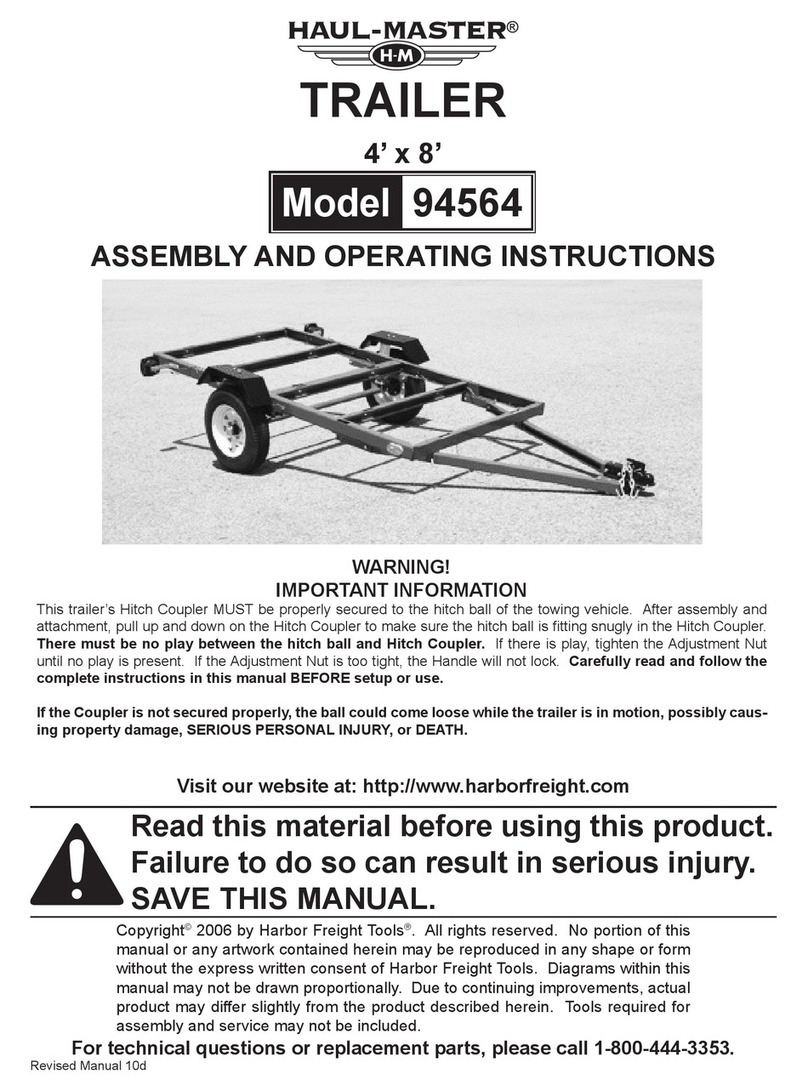
HAUL MASTER
HAUL MASTER 94564 Assembly and operating instructions
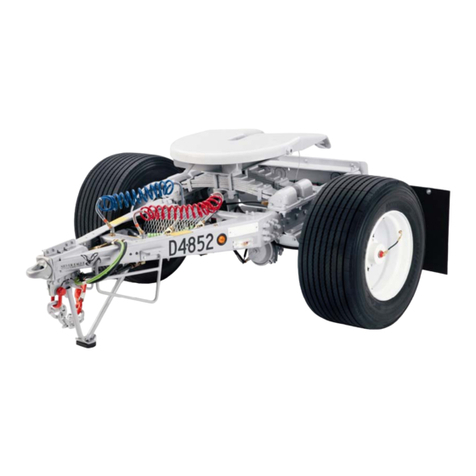
Silver Eagle
Silver Eagle VAST-20W Operation, service & parts manual

Burley
Burley Pet Trailer Owner's instruction and service manual
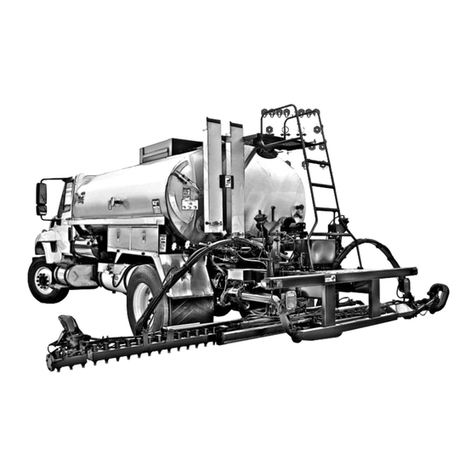
Etnyre
Etnyre Centennial A-130-12R manual

Club Car
Club Car IQ PLUS 2008 Maintenance and service manual supplement
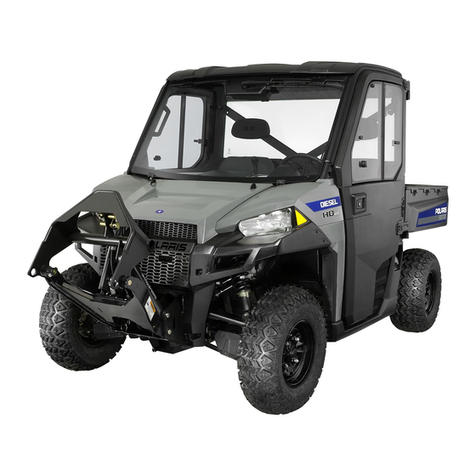
Polaris
Polaris BRUTUS owner's manual
